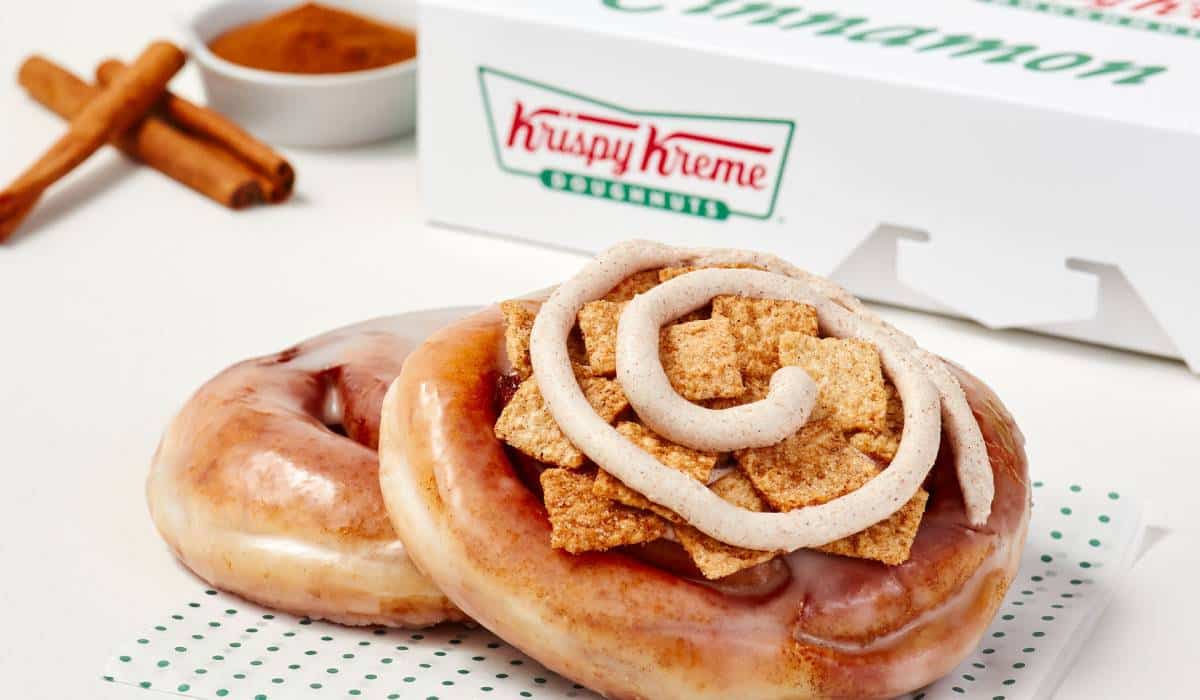One of Krispy Kreme’s primary goals is to deliver as many fresh doughnuts as possible to new and existing customers around the world.
Quantitatively, the objective is 50,000 global points of access, which are all locations where fresh doughnuts or cookies can be purchased, including hot light theater shops, fresh shops, carts and food trucks, delivered fresh daily (DFD) doors, and cookie shops. As of April 3, Krispy Kreme had 11,027 global points of access, an increase of nearly 2,000 compared to the year-ago period.
Out of those options, CEO Michael Tattersfield said the biggest driver is low-capital DFD doors, or convenience and grocery stores. DFD doors typically require just $2,000-$10,000 in capital expenditures.
“We know that fresh matters,” Tattersfield said during Krispy Kreme’s Q1 earnings call. “As our customers tell us, this is the most important attribute when purchasing a sweet treat.”
Krispy Kreme finished Q1 with 9,144 DFD doors, including 5,411 in the U.S. and Canada. In Q1, 207 DFD doors were added in these two countries, a 15 percent increase year-over-year. The brand expects to add at least 500 for the entire year.
The DFD model—strategically placed production hubs and retail shops sending fresh doughnuts to multiple locations every day—evolved from a wholesale business that brought older, discounted doughnuts to retailers nationwide. To put in perspective just how much the new operation matters, CFO Joshua Charlesworth used the example of a long-time company-owned market in Nashville. It was converted from wholesale to DFD in late 2020, and in Q1, it earned 24 percent local EBITDA margin, a 1,200-basis-point increase versus the legacy business.
READ MORE: Krispy Kreme Charges Toward 50,000 Points of Access
Charlesworth painted the same picture in a previous earnings call. The Albuquerque, New Mexico, market increased revenue per production hub 29 percent year-over-year to $5.7 million in Q4, driven by a 350 percent increase in DFD revenue. Local EBITDA margin was more than 20 percent, good for a 700-basis-point jump.
In the course of acquiring franchise territories and converting them to the DFD program, Krispy Kreme has learned the importance of having grocery and convenience stores that experience high traffic and are locally positioned, Charlesworth said. He also noted the significance of building route management software for drivers and adding demand planning capabilities and labor management solutions in production hubs to improve efficiency of drive-thrus, ecommerce, and the delivery of fresh doughnuts.
“We’re finding some of the older stores need adjustment, need remodeling, and even need the space adjusting to make sure that it works effectively and efficiently,” Charlesworth said. “We’re seeing a whole range of performance, but overall, 300-to-400-basis-point increase in margins when we’ve deployed the DFD program.”
The brand plans to bolster DFD sales through the addition of LTOs—specialty doughnuts that can be priced higher than Original Glazed, sometimes up to 50 percent more. Recent examples include a doughnut topped and stuffed with Twix candy bars and the return of cinnamon rolls. Innovation fueled Krispy Kreme’s 13 percent increase in doughnuts sold in Q1 compared to last year.
For the first time, the chain was able to activate Valentine’s Day and St. Patrick’s Day across all fresh doughnut channels in the U.S., meaning specialty doughnuts were available simultaneously at shops, via ecommerce, and at local grocery and convenience stores. This contributed to a 27 percent increase in sales per DFD door in the U.S. and Canada year-over-year, but Tattersfield said there’s “significant room to grow.”
“So one of the first things that we try to do in innovation when we come up with something pretty unique and differentiated is the social media strategy that we really push, right?” Tattersfield said. “So you get these impressions that you get out and you get the brand awareness. And remember, we don’t spend—or not a heavy spend—on the marketing side, right? So we use the power of the brand and its uniqueness of products.”
Krispy Kreme’s net revenue increased 15.8 percent in Q1 to $372.5 million, while it’s organic revenue grew 15 percent to $370.1 million.
In the U.S. and Canada specifically, net revenue rose 13.8 percent, driven by the chain’s omni-channel strategy, and organic revenue increased 9.7 percent, fueled by more points of access and strong performances from DFD doors. Sales per hub in the U.S. and Canada lifted to $4.3 million—a 19.4 percent bump year-over-year and 7.5 percent increase quarter-over-quarter.
The U.S. and Canada segment was aided by the growth of Insomnia Cookies, which saw double-digit growth in organic revenue and adjusted EBITDA. Seven shops opened in Q1, with more than 30 planned for the entire fiscal year. Insomnia ended Q1 with 217 stores. The strategy is to double the domestic footprint in the next five years and expand internationally.




